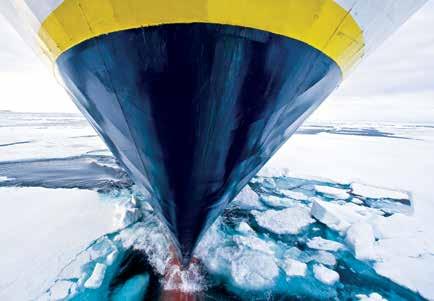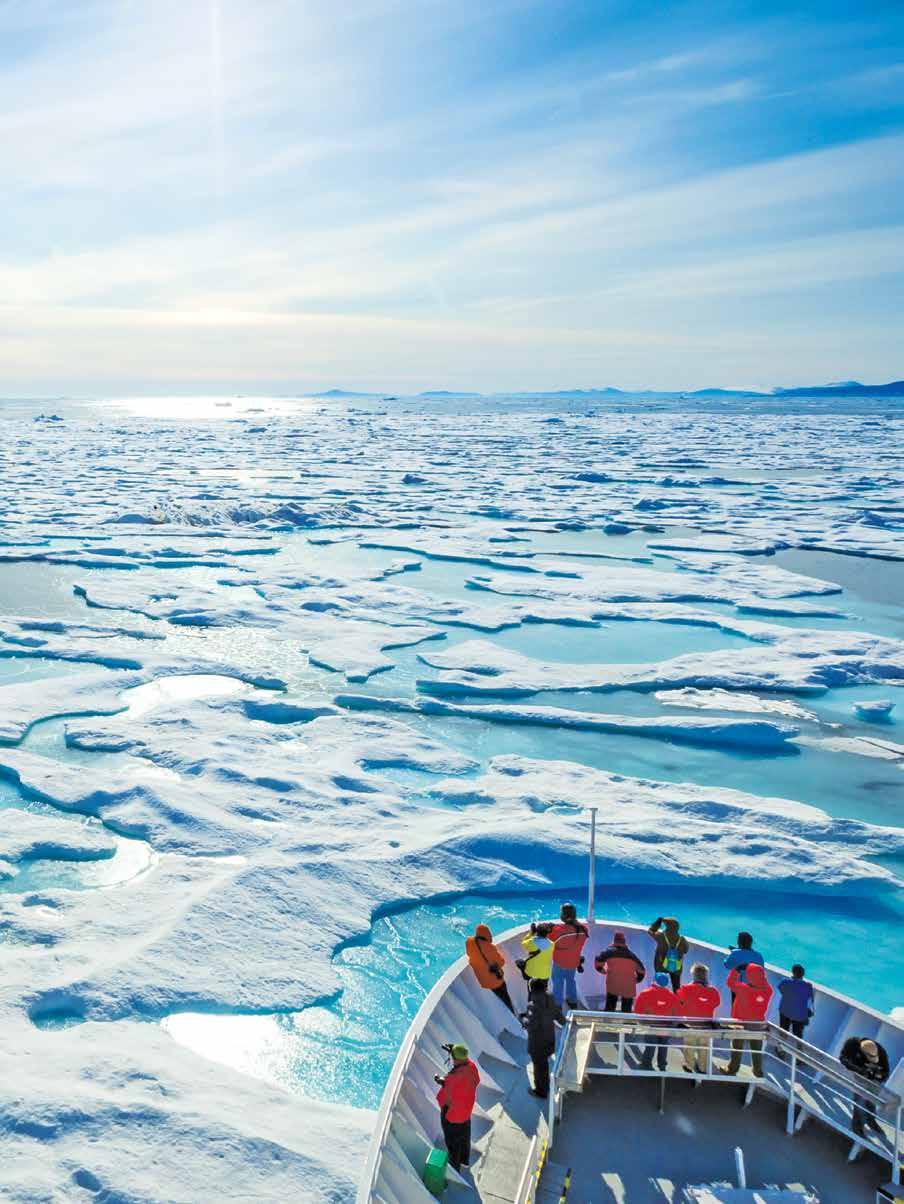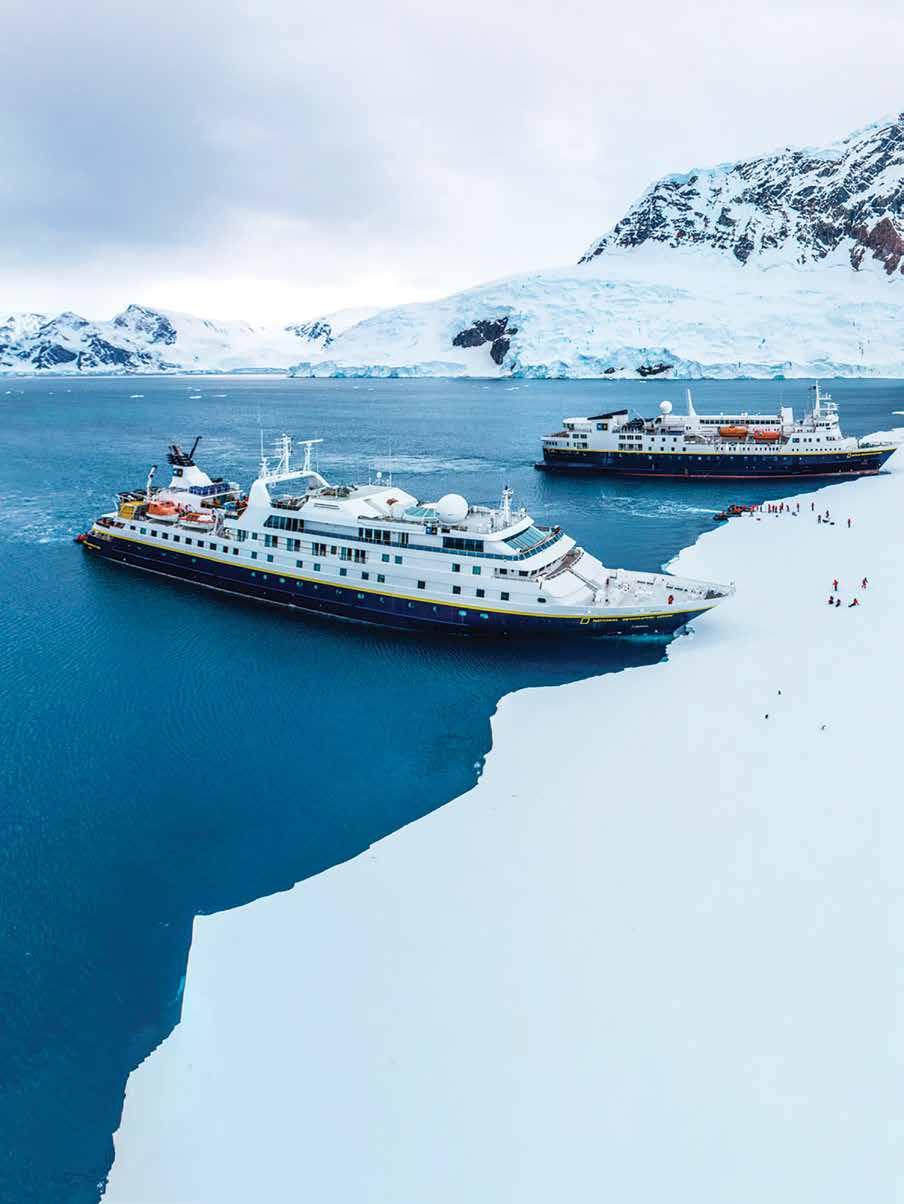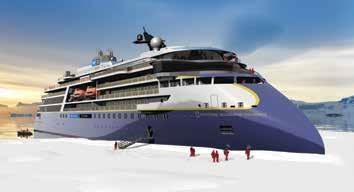
2 minute read
What Kind ofShip is Best?
What Kind of Ship is Best?
The style of vessel you choose for your Antarctic adventure will define your expedition experience. The kinds of vessels currently voyaging to Antarctica are large and smaller cruise ships, icebreakers, polar adventure ships, and fully-equipped expedition ships.
For maximum safety, and to have a more in-depth experience, choose a polar-class vessel with a high ice rating in combination with a veteran ice team noted for superior navigational skills—both essential for safe and rewarding travel. National Geographic Explorer and National Geographic Orion have a very high, classic ice strength rating. The twin ships National Geographic Endurance and National Geographic Resolution will be built within the icebreaker category, which allows the ships to penetrate deeper in both the Arctic and Antarctic waters.
The newest vessels in the fleet, National Geographic Endurance and National Geographic Resolution, will be built at the same time as a number of new polar-going cruise ships, intended to carry 200-500 or more guests, yet their guest capacity was deliberately limited to 126. National Geographic Orion carries a 102-guest community. And National Geographic Explorer accommodates 148 guests. The intimate scale of these ships, their low guest count, plus veteran staff and crew, contributes to Lindblad-National Geographic’s unique ability to maximize daily opportunities to get off ship and out exploring. Swift and smooth logistics are key so guests are not forced to wait their turn amid a large cohort. The combination of the polar-adapted vessels and the proprietary ‘mud maps’ Lindblad Captains use (for decades, Lindblad Captains have kept

Top: National Geographic Explorer and National Geographic Orion parked in the early Antarctic season sea ice, allowing guests the thrill of disembarking onto the frozen sea. Above: Artist rendering of National Geographic Endurance, and twin ship National Geographic Resolution, with their patented X-bow design which can cut through waves without reducing speed.


detailed soundings, which are routinely filed with the British Hydrographic Agency to aid other mariners. This level of knowledge enables them to confidently and safely take guests to off-the-beaten-path landings for exclusive encounters)—mean the vessels can anchor in extraordinary locations, closer to shore, to quickly deploy Zodiacs or kayaks from the company’s exclusive floating platform, virtually anywhere in the ice, and provide more daily activities to more guests simultaneously.
Based on 50+ years of experience continuously running Antarctic expeditions, Lindblad ships are outfitted with the latest in seafaring technology—see the chart on page 13 for a listing. And each is equipped with an array of tools for exploration—Zodiacs, kayaks, ROVs, snowshoes, cross-country skis—to enable guests to enjoy active, up-close, personal explorations, and through the efforts of a dedicated onboard undersea specialist, even observe the polar marine world.

Given their high ice ratings, these ships are able to easily and safely penetrate the softer, first-year ice common in Antarctica in the early season, allowing their Captains to accomplish the magic of “parking” the ship in the ice, so guests can disembark onto a frozen sea—to snowshoe, cross-country ski, or simply walk freely about. Tough enough to provide the thrill of crushing through ice, the ships are also nimble enough to navigate safely through the growlers and bergy bits floating in Antarctic waters.







